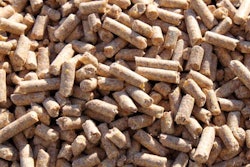
Like every piglet feed manufacturer, I compete against nature’s most perfect feed: sow’s milk. It is no secret; suckling piglets will ignore even the best of the creep feeds if they can have access to as much sow’s milk as they want. It is only the hyperprolificacy of modern sows and our inability to convince them to eat enough that limit the daily allowance of milk per piglet. But, still, we have to compete with a product that is so well designed that if we were to duplicate we would end up with a very, very expensive creep feed. Or, perhaps we got it all wrong and sow’s milk is not that perfect. After all, it was designed having in mind wild boar piglets living in nature. Now, this is an on-going debate among piglet nutritionists worldwide.
Milk yield and nutrients
Milk has been traditionally considered the ideal feed for neonatal animals. Its composition indicates a rich concentration in lipids (energy), coupled with a high protein digestibility (over 90 percent). Neonatal pigs fed on sow’s milk alone can double their birth weight twice in three weeks. Without a doubt, milk is the optimal nourishment for piglets within its evolutional context, but questions still remain regarding its suitability for commercially raised piglets.
Artificially raised piglets are capable of growing at rates well beyond those possible by natural suckling. Thus, the quantity of sow’s milk is a limiting factor by itself in determining piglet growth. For example, it has been suggested that sows should produce over 18 kg/day milk by day 21 of lactation for piglets to achieve their genetic potential for growth. Obviously, this is more than currently possible in commercial farms where sow milk yield does not exceed 10 kg/day.
Furthermore, sow’s milk has a low protein-to-energy ratio, which favors fat instead of lean deposition in the neonatal piglet. Naturally, rapid fat deposition during the first weeks of life would favor survivability in wild pigs exposed to unfavorable environmental conditions as pigs are born with extremely low body fat reserves. Under controlled (indoor) commercial conditions, however, excess lipid deposition might be unnecessary. Thus, sow’s milk might be considered as deficient in protein for modern production practices.
Finally, sow’s milk (in accord with milk from most farm animal species) is poor in iron, copper and vitamin D. Under natural conditions, these nutrients were easily secured from contact with soil and exposure to sunlight and, thus, their presence in milk became evolutionary redundant. Under modern commercial practices, however, piglets must be supplied with iron before weaning and the full complement of all vitamins and minerals immediately after weaning.
Biopeptides
Recently, our views regarding the many roles of sow’s milk have expanded to include enhancement of gastrointestinal immunity against pathogenic microorganisms and, also, luminal nutrition from mature milk. Novel discoveries also indicate that milk affects gastrointestinal microflora and aids in the establishment of healthy bacteria. Growth-promoting substances also have been reported in sow’s milk, although their exact mode of action and significance (at least commercially) are still under investigation.
More specifically, sow’s milk contains a number of peptides, hormones and enzymes with a biological role capable of promoting maturation of the digestive system, modulating gut microflora, and inducing secretion of hormones and peptides in the gut. Such compounds include lactoferrin, lysozyme, protease inhibitors, lactoperoxidase, neurotensin, bombesin, thyroid hormones, prolactin and insulin. In addition several growth-stimulating substances such as insulin, epidermal growth factor and insulin-like growth factors have been identified in sow’s milk.
The presence of insulin-like growth factors (IGF-I and IGF-II) in milk has received considerable attention because these compounds have been shown to increase villus height and enhance maturation of the gastrointestinal tract. It is also believed that absorption of these factors might enhance development of body organs and promote muscle growth. Today, there is considerable interest in the commercial aspects of using such compounds in milk replacers and other nutritional supplements for neonatal and weaned pigs.
In conclusion
It appears that sow’s milk may not be the perfect feed for neonatal pigs raised under commercial conditions. Its supply is limited, and its composition does not favor lean deposition. To this end, nutritional supplements for suckling piglets and (or) nutritional intervention strategies for sows might be of benefit in terms of early piglet growth. Our understanding of biofactors in sow’s milk is extremely limited, and this might in turn limit the extent to which we can improve our commercial piglet feeds. Thus, more research is required towards this direction.

















